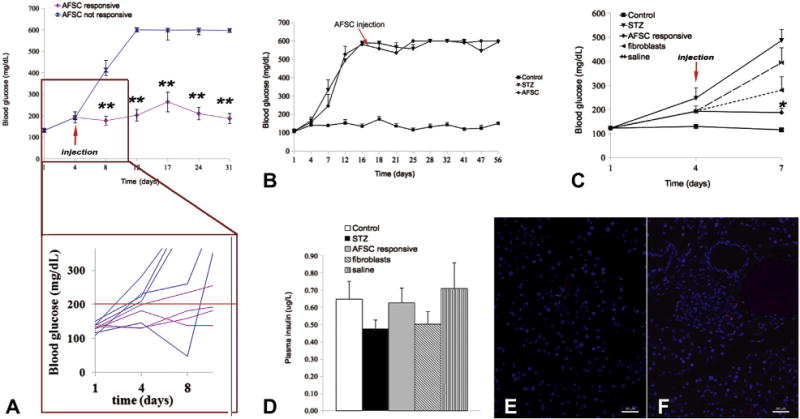Figure 3.

Level of glucose at the time of cell injection correlated with response to AFSC treatment. (A) Blood glucose levels of mice at the time of AFSC injection (experimental day 4). It is evident that mice responding to AFSC treatment had regular blood glucose values at the moment of cell injection (≤200 mg/dL). Among the non-responsive mice, only one had glycemia ≤200 mg/dL at the time of cell injection but showed a generalized irregular trend, becoming severely hypoglycemic after cell injection before reaching definitive hyperglycemia. (B) Injection of AFSC at a later time point (14 days after STZ treatment) did not correct hyperglycemia, confirming that rescue is unlikely when hyperglycemia is already established and the acute phase of damage has occurred. AFSC injection was repeated for short-term result (72 h after injection). After STZ treatment, mice were AFSC-, fibroblast- or saline-injected and monitored for blood glucose (C) and plasma insulin (D) in the short term. AFSC-responsive mice showed normoglycemia, with significantly reduced levels compared with STZ-treated mice. Both fibroblast-injected and saline-injected mice presented glucose values slightly lower than STZ-treated mice, even though not statistically different and still above the threshold that defines hyperglycemia (250 mg/dL). (E,F) Detection of AFSC by CM-Dil labeling 72 h after injection. AFSC were homing in both exocrine (E) and endocrine (F) tissue. Magnification ×200. Scale bar = 50 μm. *P < 0.05, **P < 0.01 (arrow indicates injected cells).
